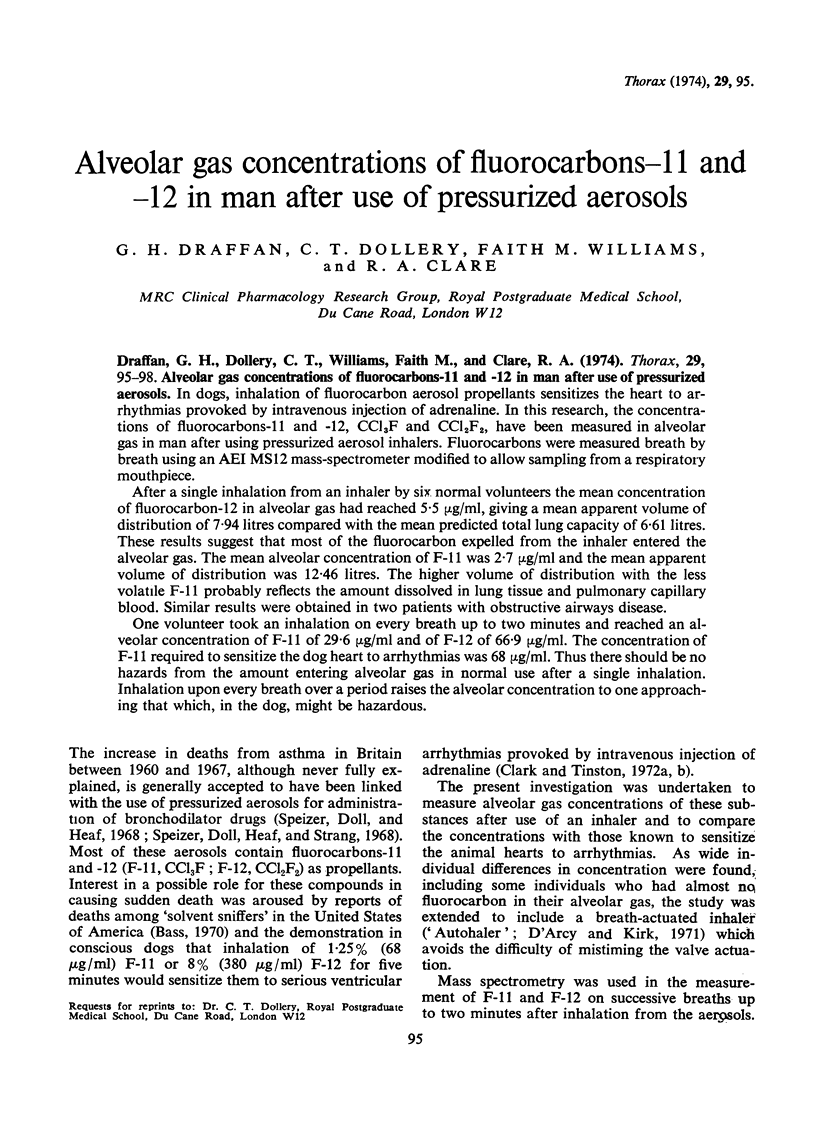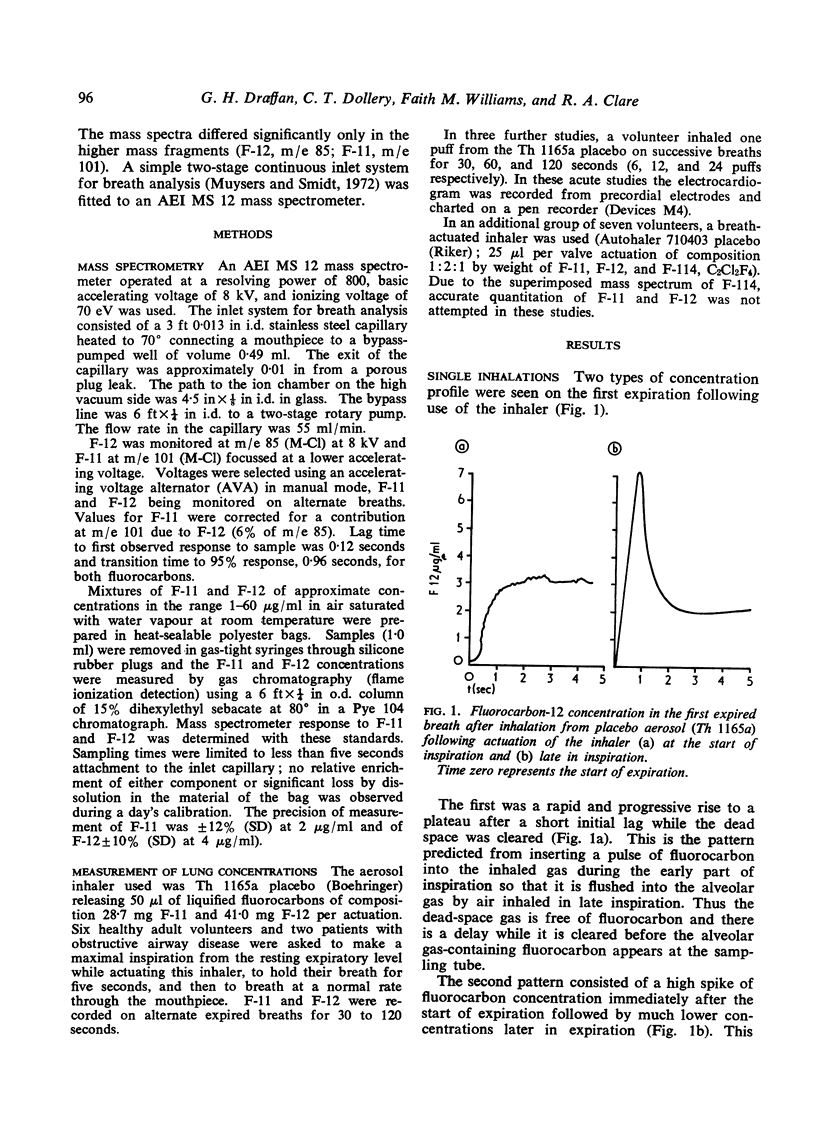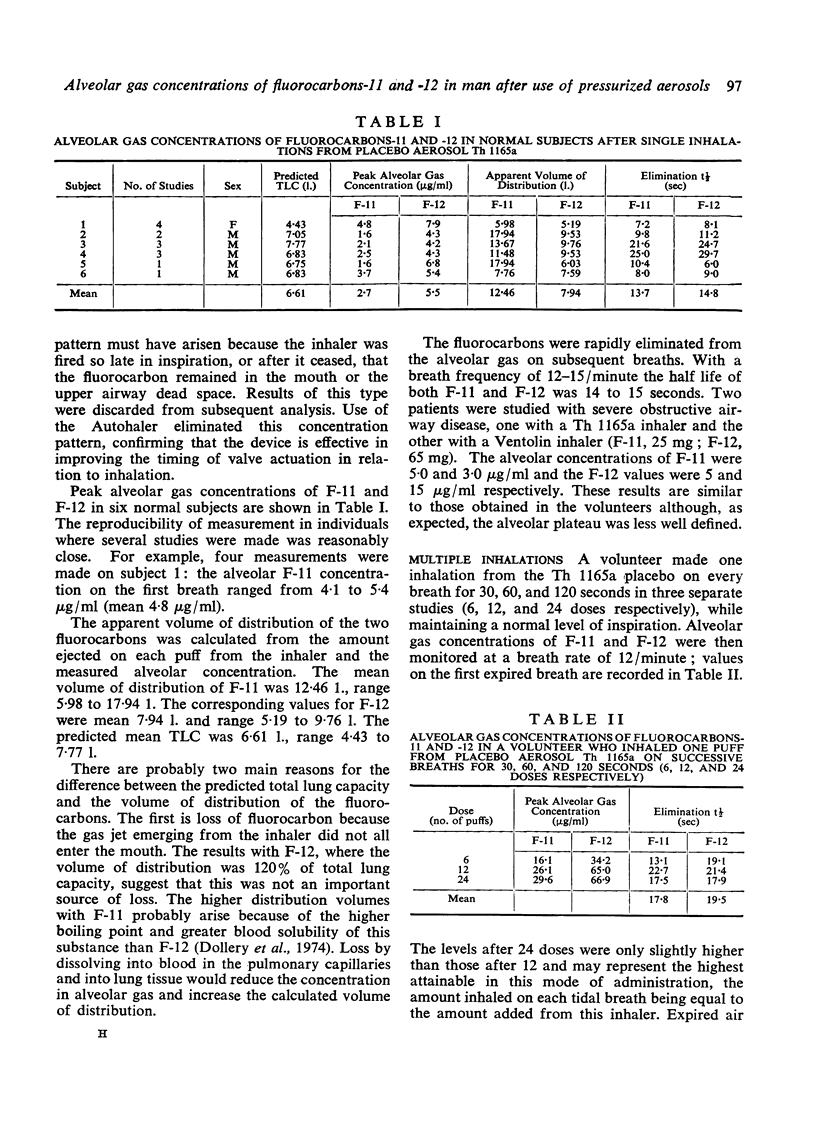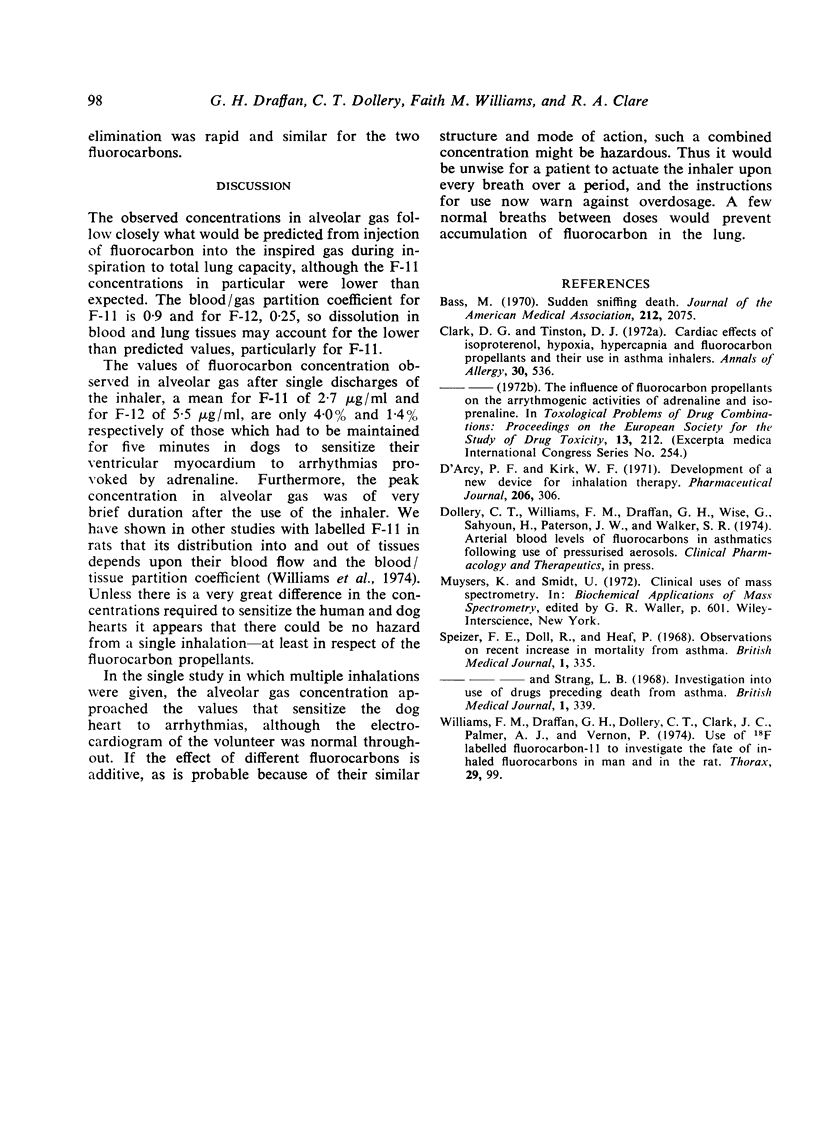Abstract
Draffan, G. H., Dollery, C. T., Williams, Faith M., and Clare, R. A. (1974).Thorax, 29, 95-98. Alveolar gas concentrations of fluorocarbons-11 and -12 in man after use of pressurized aerosols. In dogs, inhalation of fluorocarbon aerosol propellants sensitizes the heart to arrhythmias provoked by intravenous injection of adrenaline. In this research, the concentrations of fluorocarbons-11 and -12, CCl3F and CCl2F2, have been measured in alveolar gas in man after using pressurized aerosol inhalers. Fluorocarbons were measured breath by breath using an AEI MS12 mass-spectrometer modified to allow sampling from a respiratory mouthpiece.
After a single inhalation from an inhaler by six normal volunteers the mean concentration of fluorocarbon-12 in alveolar gas had reached 5·5 μg/ml, giving a mean apparent volume of distribution of 7·94 litres compared with the mean predicted total lung capacity of 6·61 litres. These results suggest that most of the fluorocarbon expelled from the inhaler entered the alveolar gas. The mean alveolar concentration of F-11 was 2·7 μg/ml and the mean apparent volume of distribution was 12·46 litres. The higher volume of distribution with the less volatile F-11 probably reflects the amount dissolved in lung tissue and pulmonary capillary blood. Similar results were obtained in two patients with obstructive airways disease.
One volunteer took an inhalation on every breath up to two minutes and reached an alveolar concentration of F-11 of 29·6 μg/ml and of F-12 of 66·9 μg/ml. The concentration of F-11 required to sensitize the dog heart to arrhythmias was 68 μg/ml. Thus there should be no hazards from the amount entering alveolar gas in normal use after a single inhalation. Inhalation upon every breath over a period raises the alveolar concentration to one approaching that which, in the dog, might be hazardous.
Full text
PDF



Selected References
These references are in PubMed. This may not be the complete list of references from this article.
- Bass M. Sudden sniffing death. JAMA. 1970 Jun 22;212(12):2075–2079. [PubMed] [Google Scholar]
- Clark D. G., Tinston D. J. Cardiac effects of isoproterenol, hypoxia, hypercapnia and fluorocarbon propellants and their use in asthma inhalers. Ann Allergy. 1972 Sep;30(9):536–541. [PubMed] [Google Scholar]
- Speizer F. E., Doll R., Heaf P. Observations on recent increase in mortality from asthma. Br Med J. 1968 Feb 10;1(5588):335–339. doi: 10.1136/bmj.1.5588.335. [DOI] [PMC free article] [PubMed] [Google Scholar]
- Speizer F. E., Doll R., Heaf P., Strang L. B. Investigation into use of drugs preceding death from asthma. Br Med J. 1968 Feb 10;1(5588):339–343. doi: 10.1136/bmj.1.5588.339. [DOI] [PMC free article] [PubMed] [Google Scholar]
- Williams F. M., Draffan G. H., Dollery C. T., Clark J. C., Palmer A. J., Vernon P. Use of 18F labelled fluorocarbon-11 to investigate the fate of inhaled fluorocarbons in man and in the rat. Thorax. 1974 Jan;29(1):99–103. doi: 10.1136/thx.29.1.99. [DOI] [PMC free article] [PubMed] [Google Scholar]


